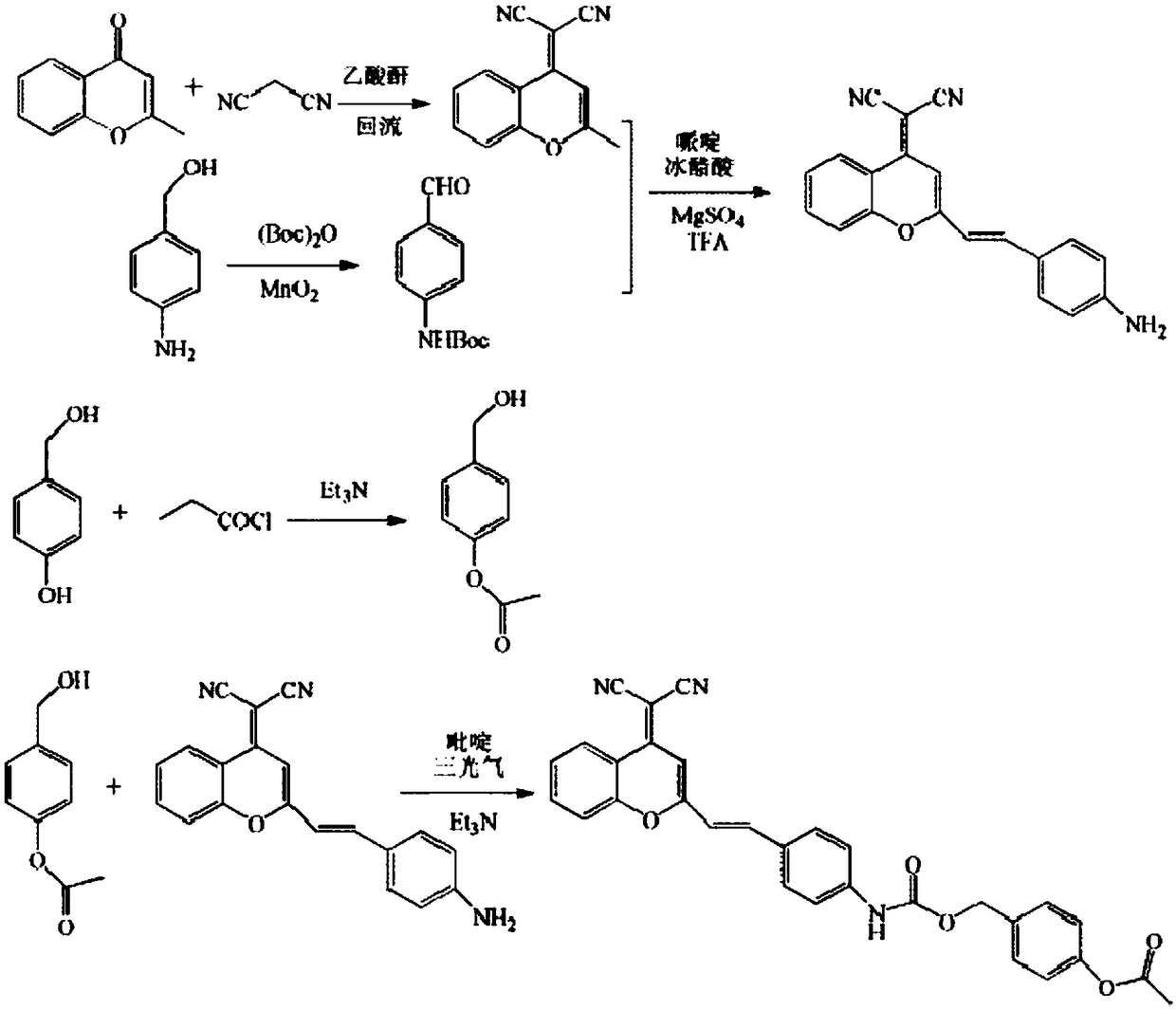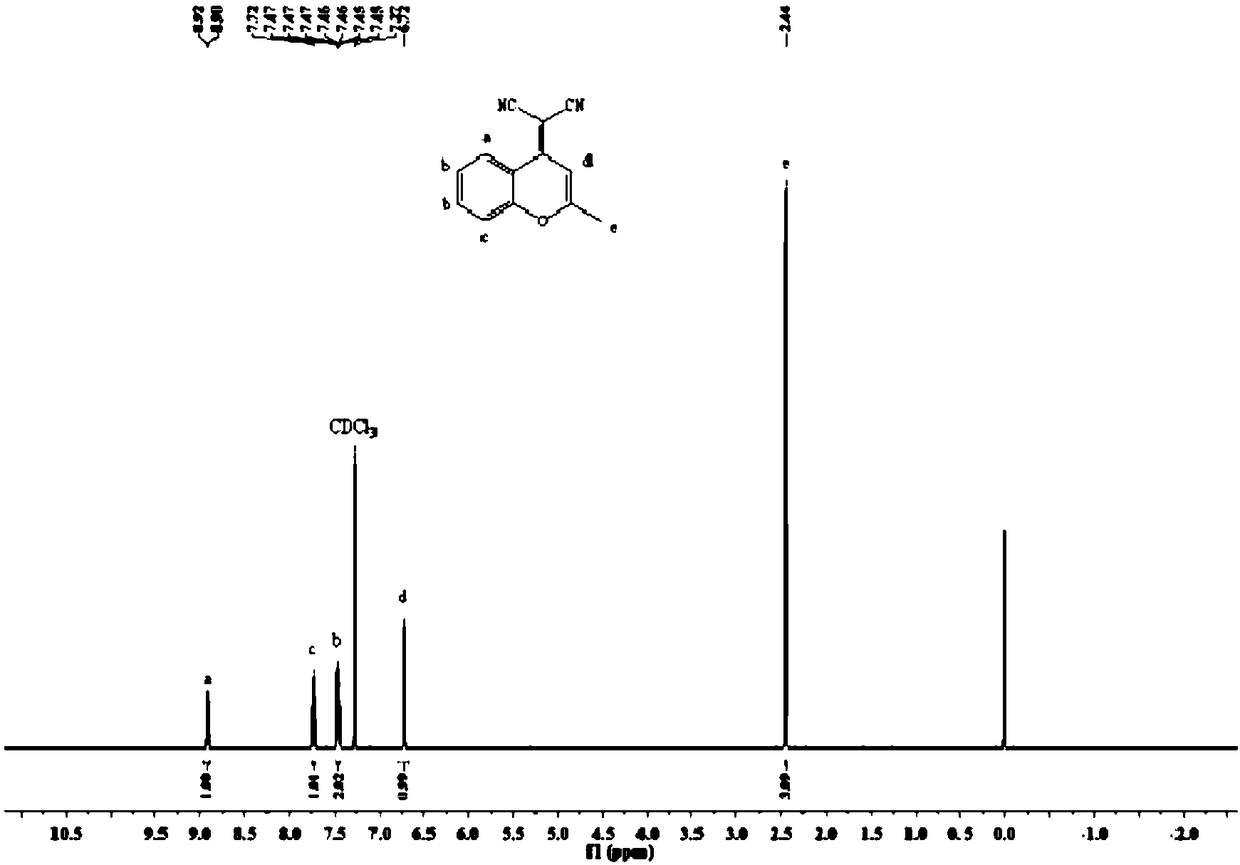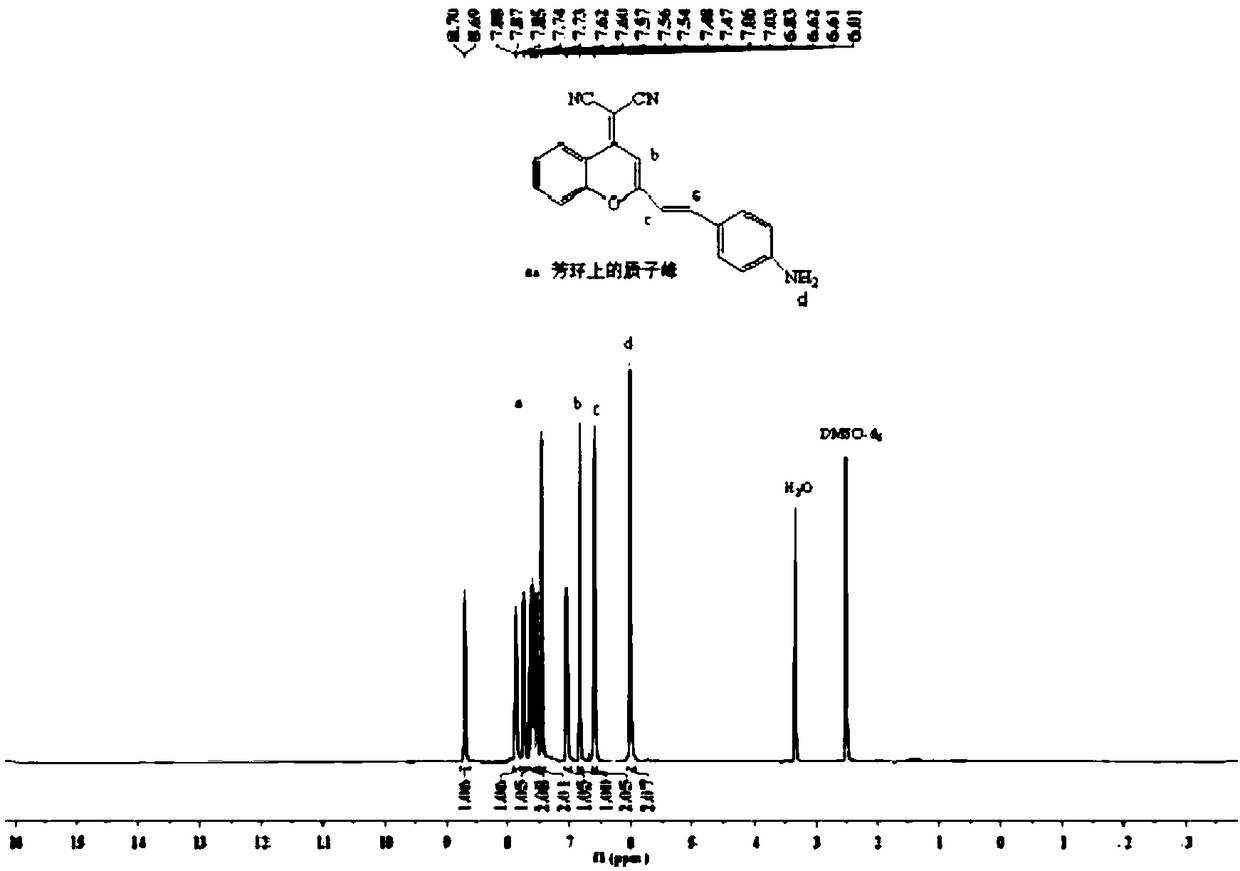A fluorescent probe for detecting carboxylesterase and its preparation method and application
A technology of fluorescent probe and carboxylesterase, which is applied in the field of analysis and detection, can solve the problems of difficult enzyme accurate analysis, fluorescent probe is easily interfered by external factors, cumbersome steps, etc., and achieves good anti-interference, intuitive detection mode, The effect of improving detection precision and accuracy
- Summary
- Abstract
- Description
- Claims
- Application Information
AI Technical Summary
Problems solved by technology
Method used
Image
Examples
Embodiment 1
[0067] (1) Dissolve 2304mg of 2-methyl-4H-1-benzofuran-4-one (14.4mmol) and 1320mg of malononitrile (20mmol) in 20mL of acetic anhydride, stir and heat at 143°C for 12 hours After the reaction, spin dry under reduced pressure to remove the solvent, then add 20mL of water, heat to reflux for 1 hour, and control the temperature to 100°C; after cooling to room temperature, extract with dichloromethane, and the obtained organic layer is then separated with water and saturated sodium chloride. Washed once, the organic phase was dried with anhydrous sodium sulfate, filtered; the organic solvent was removed by rotary evaporation, and the resulting solid was purified by silica gel column chromatography (petroleum ether: dichloromethane, V / V=2:3) to obtain the white solid product 2 -(2-Methyl-4H-dihydrobenzopyran-4-yl)-malononitrile 1857mg (yield rate is 62%); This product is characterized by H NMR spectrum, H NMR spectrum figure is as follows figure 2 shown;
[0068] (2) Dissolve 24...
Embodiment 2
[0077] (1) Dissolve 5552mg of 2-methyl-4H-1-benzofuran-4-one (34.7mmol) and 3262mg of malononitrile (49.4mmol) in 40mL of acetic anhydride, stir and heat to control the temperature at 140°C for 10 hours, after the reaction, spin dry under reduced pressure to remove the solvent, then add 48mL of water, heat to reflux for 0.5 hours, and control the temperature to 95°C; Wash each once, dry the organic phase with anhydrous sodium sulfate, filter; remove the organic solvent by rotary evaporation, and purify the obtained solid by silica gel column chromatography (petroleum ether: dichloromethane, V / V=2:3) to obtain a white solid product 2-(2-Methyl-4H-dihydrochromen-4-yl)-malononitrile 5485 mg (76% yield);
[0078] (2) Dissolve 1500mg of 4-aminobenzyl alcohol (12.18mmol) in 7.3mL of 1,4-dioxane, 7.3mL of water and 12mL of 1M sodium hydroxide solution, cool to -5°C, add 2930mg of dioxane Di-tert-butyl carbonate (13.4mmol), stirred at room temperature for 1.5 hours, spin-dried under ...
Embodiment 3
[0084] (1) Dissolve 2825mg of 2-methyl-4H-1-benzofuran-4-one (17.65mmol) and 1631mg of malononitrile (24.7mmol) in 25mL of acetic anhydride, stir and heat to control the temperature at 141°C for reaction 11 hours, after the reaction, spin dry under reduced pressure to remove the solvent, then add 24mL of water, heat to reflux for 0.7 hours, and control the temperature to 98°C; Wash each once, dry the organic phase with anhydrous sodium sulfate, filter; remove the organic solvent by rotary evaporation, and purify the obtained solid by silica gel column chromatography (petroleum ether: dichloromethane, V / V=2:3) to obtain a white solid product 2-(2-Methyl-4H-dihydrochromen-4-yl)-malononitrile 2525 mg (68.8% yield);
[0085] (2) Dissolve 1355mg of 4-aminobenzyl alcohol (11mmol) in 7.15mL of 1,4-dioxane, 7.15mL of water and 11.55mL of 1M sodium hydroxide solution, cool to -3°C, add 3127mg of dioxane Di-tert-butyl carbonate (14.3mmol), stirred at room temperature for 3.5 hours, spi...
PUM
 Login to View More
Login to View More Abstract
Description
Claims
Application Information
 Login to View More
Login to View More - R&D
- Intellectual Property
- Life Sciences
- Materials
- Tech Scout
- Unparalleled Data Quality
- Higher Quality Content
- 60% Fewer Hallucinations
Browse by: Latest US Patents, China's latest patents, Technical Efficacy Thesaurus, Application Domain, Technology Topic, Popular Technical Reports.
© 2025 PatSnap. All rights reserved.Legal|Privacy policy|Modern Slavery Act Transparency Statement|Sitemap|About US| Contact US: help@patsnap.com



